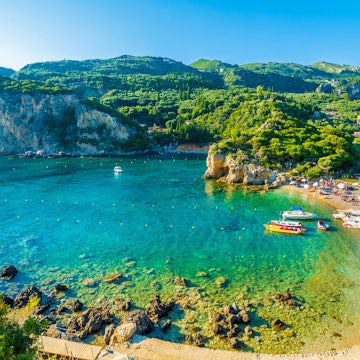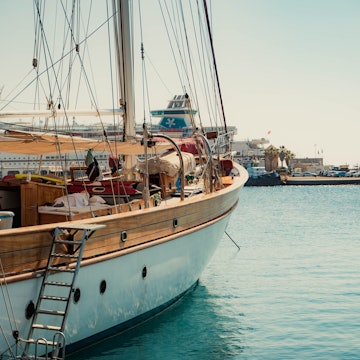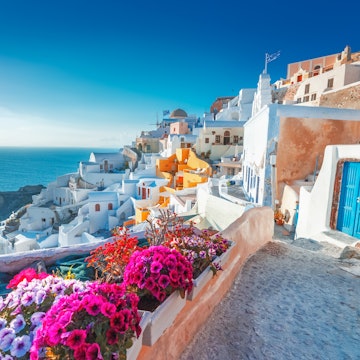
Secrets of Corfu: the hidden depths of Greece’s holiday isle

Nov 21, 2016 • 6 min read

Italian-style balconies in Corfu Town © Merlin74 / Shutterstock
Like every great seducer, Corfu knows exactly how to reel you in. Sunsets, sandy beaches and clear seas have made this Ionian island a summertime favourite. But look past these easy charms and you’ll discover what makes Corfu truly magical: the scent of pressed olives, monasteries draped in bougainvillea, and fortresses that rise above bluer-than-blue seas.

Step into swashbuckling history
Holidaymakers wander through Corfu Town giddy on sunshine, almost in a trance. Step into its katounia, or narrow lanes, and you’re instantly surrounded by elegant Venetian buildings. During the 17th and 18th centuries, these alleys were a commercial hub; today their shops brim with jewellery, handbags and miniature liqueur bottles.
Corfu Town is touristy, make no mistake – but it’s an essential starting point to understand the island’s history. Mere paces from each other in the city centre, the San Giacomo building (now Town Hall) dates to Venetian rule between the 14th and late 18th centuries, while the Liston Arcade is gracefully French, harking back to the Napoleonic occupation that began in 1797.

Hidden behind the raffish architecture is Corfu’s history of gunpowder and battleships. Venetian control allowed the island to prosper, but the Ottomans launched repeated attacks. Corfu Town’s Old Fortress – one of two forts that gaze warily out to sea – was bulked up by the Venetians and it successfully repelled three Ottoman sieges. The bones of the fortress date even earlier: Corfu was a frequent target of pirate attacks, and Byzantine fortifications are dotted around the island.
The most impressive is Angelokastro, the highest sea-facing fort on Corfu. Rock-strewn paths, hemmed by cypress trees, zigzag towards this weather-beaten citadel. It never fell, despite ceaseless pirate attacks and Ottoman sieges. Equally stunning is the Byzantine castle of Kassiopi on Corfu’s northeastern corner. Guards once scanned the horizon for waterborne threats; fortunately, it’s only cruise ships these days.

Taste Corfu’s authentic flavours
Feta salads and souvlaki abound on Corfu, as do ‘English breakfasts’. Needless to say, true Corfiot cuisine is much more enticing. Italian and Greek influences muddle beautifully in dishes like sofrito (veal slow-cooked in wine, parsley and chopped garlic) and bourdeto (warming tomato and scorpion fish stew). Much is made of the island’s homegrown produce, especially kumquats and olives.
Olive trees have been tended on Corfu since Venetian times, and the best oil is pressed at The Governor (thegovernor.gr) in Agios Matheos village, which snoozes on the slopes of Mt Gamilios. Not a single tree in this unruly forest is less than a century old, and three generations of the Dafnis family have shaken olives from these branches. The Dafnis dynasty have fine-tuned the oil into a global award-winner: a vibrant liquor with fresh, peppery notes. It also has the highest recorded concentration of polyphenols of any olive oil (they’re responsible for olive oil’s famed anti-inflammatory and neuro-protective benefits) – as if you needed an excuse to be loose-elbowed when drizzling it on salad.

At the opposite end of the tastebud spectrum are kumquats, introduced to Corfu from the Middle East in the 1860s. These acrid, thumb-sized citrus fruits provide the flavour for neon liqueurs and candied fruit sold around the island. Go right to the source: Mavromatis (kumquat.gr), established in 1933, is littered with copper presses and glass bottles from its early days. Kumquat liqueur is an enduring ritual, sipped liberally across Corfu as a welcoming drink, aperitif and sundowner. It’s also splashed onto fruit salads, particularly strawberries, or stirred into cocktails (it goes well with Prosecco), so you’ll find many occasions to say yamas (cheers).

Find your own island escape
Many frazzled Athenians dream of swapping city life for slow food and nature on Corfu. Some succeed, like Panagiotis Vasilakis, known locally as ‘Mr Honey’ (mrhoney.eu). When Panagiotis set up shop in tiny Vatos village, he initially knew little about bees. But the prospect of living amid Corfu’s buzzing wildflower meadows and producing honey was a strong impetus to remain – the sweet life indeed.
You’ll meet many such escapees on hikes and drives around the island, especially in Corfu’s interior. Drive a road less travelled between beach spot Ermones and Corfu Town: you’ll pass Mr Honey’s home Vatos, stone-walled Kokkini, and tiny Kompitsi, whose buttercream church peers over a forested valley.

The island’s most enchanting village is Old Perithia (old-perithia.com), a huddle of stone houses halfway up Mt Pantokrator (906m). While its ‘ghost town’ label isn’t entirely accurate, you’ll see abandoned Venetian houses and stone arches dappled with moss. A few restaurants and a guesthouse are reviving Old Perithia, though most buildings languish in a distinguished state of decay.
Even if you don’t stray far from Corfu’s beaches, history and serenity are close by. A 15-minute walk from the sandcastles and speedboats of Paleokastritsa Beach is a 13th-century monastery. Its bells clang above gardens wreathed in jasmine, the scent mingling with incense wafting from the gold-laden church. Corfu’s spiritual heart beats strongest at Easter, when choral music concerts take place – as well as the less peaceful tradition of smashing clay pots, or botides, on Easter Saturday.
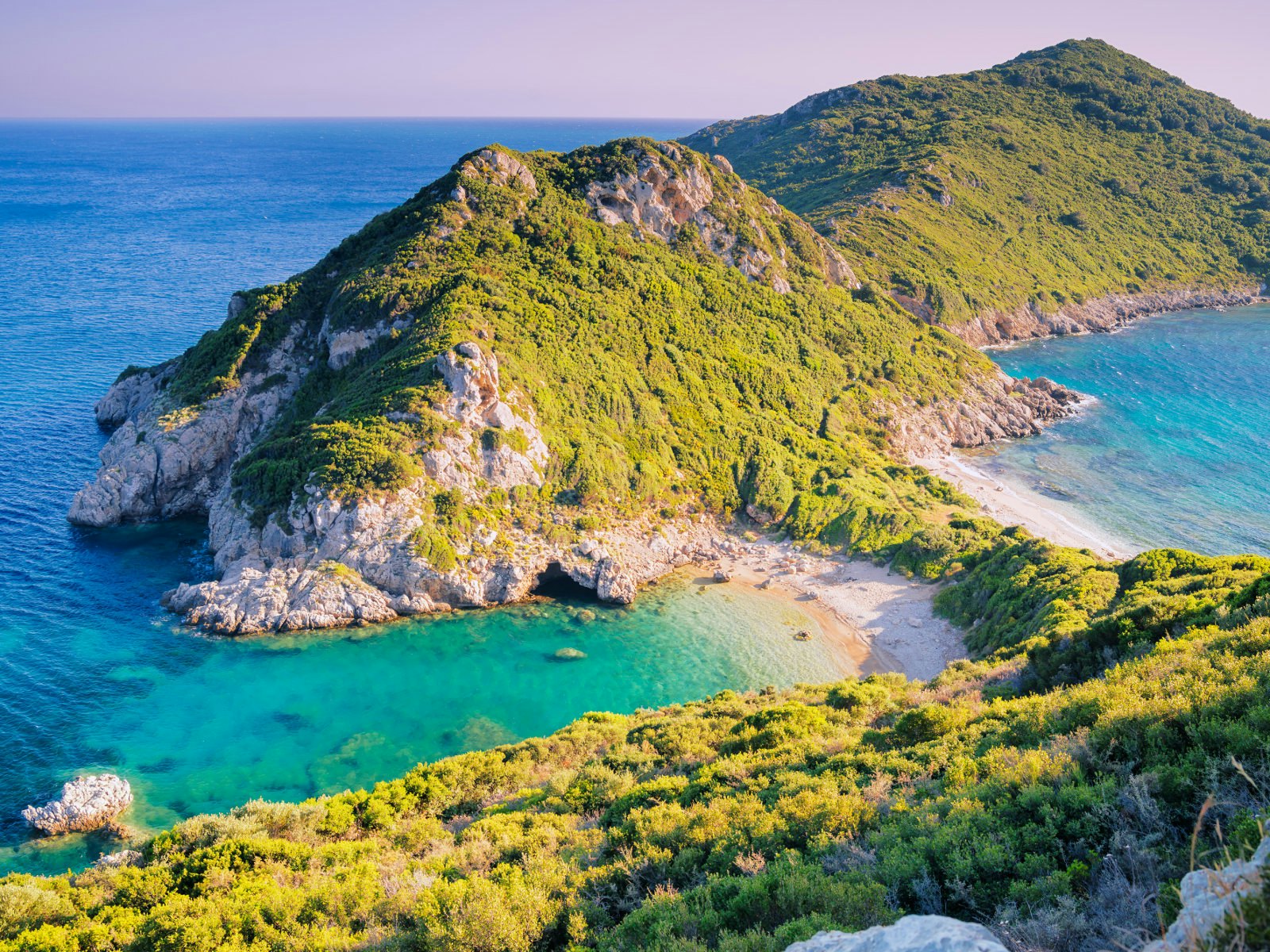
Hike into nature
Walking is the best way to adjust to Corfu’s languid pace, and it’s essential for finding uncrowded beaches. Even if you’re based in frenetic Kavos, a 40-minute walk south leads you to Arkoudilas Beach, an unspoilt cove with white cliffs and clear water. As in several spots around the island, the beach’s mud and sand are used as a DIY spa treatment. Do as locals do: anoint your skin with mud, bask in the sun, and rinse off in the sea.
Further west, the shores are kissed by the wind so they’re just as good for kitesurfing as dozing on a beach towel. Halikounas’ dunes border the teeming Korission Lagoon, a saltwater lake that’s home to abundant birdlife. Egrets strut between tufts of glasswort, herons snap at crabs in the shallows, and migratory birds like flamingos pass through. Combine hiking and nature-spotting by tramping along the lake shore heading west towards Alonaki Bay (90 minutes), and continue north up to Kanouli Beach (another 30 minutes). Watch for rare sand orchids – and less pleasantly, mosquitos.
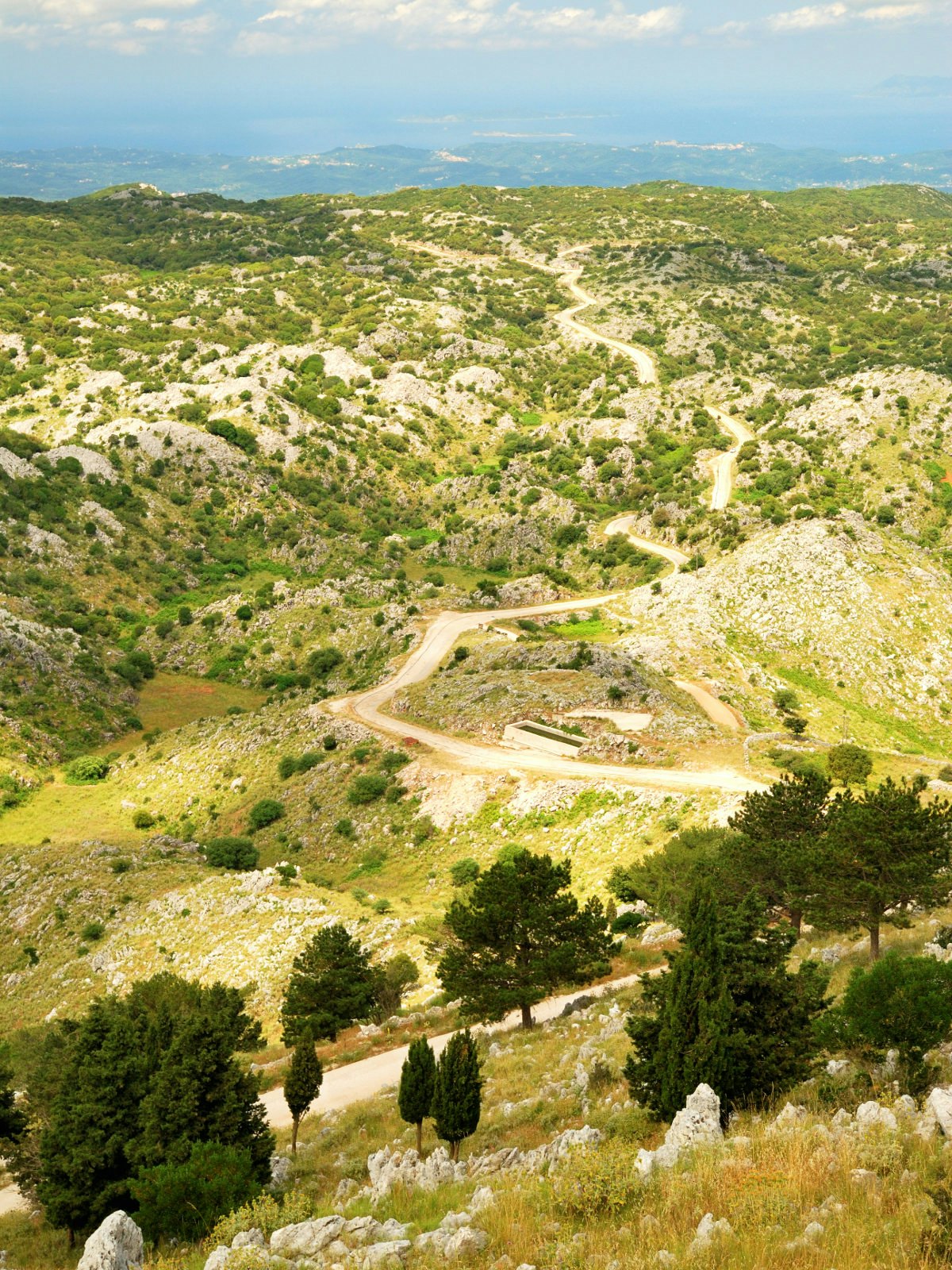
Many trails aren’t well signposted, but hardened walkers armed with GPS or a good map can tackle Corfu’s longer hikes. The long-distance Corfu Trail (thecorfutrail.com), established in 2001, threads the full length of the island from southern Kavos to Agios Spiridon on the north coast; the hike takes roughly 10 days. As you weave between vineyards, sun-bleached villages and olive groves, you’ll be in no hurry to return to a sunlounger.
Anita Isalska travelled to Corfu with support from Discover Greece (discovergreece.com) and Aegean Airlines (aegeanair.com). Lonely Planet contributors do not accept freebies in exchange for positive coverage.









